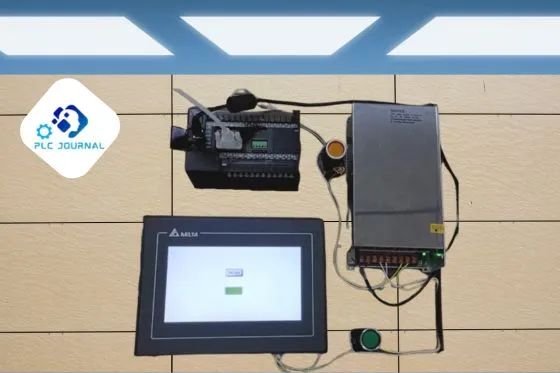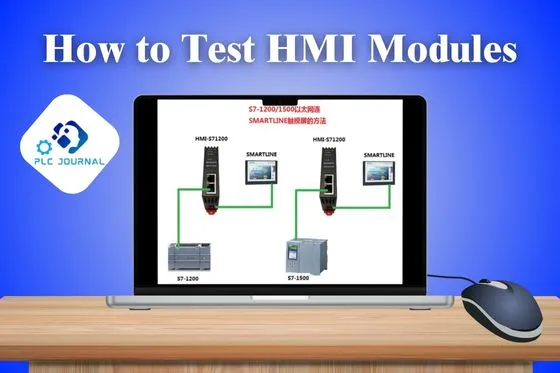Introduction: How to Test HMI Modules
In today’s rapidly advancing technological landscape, how to test Human Machine Interface (HMI) modules plays a crucial role in various industries, enabling seamless interaction between humans and machines. Whether it’s in automotive, manufacturing, or consumer electronics, ensuring the functionality and reliability of HMI modules is paramount.
In this comprehensive guide, we’ll delve into the intricacies of testing HMI modules, offering practical insights and methods to ensure optimal performance.
Understanding how to test HMI Modules:
Before diving into the testing procedures, it’s essential to grasp the fundamentals of HMI modules. Essentially, an HMI module serves as the interface between a human operator and a machine, facilitating communication and control. These modules come in various forms, including touchscreens, keypads, and graphical displays, each tailored to specific applications.
Why Testing HMI Modules is Crucial:
The reliability and performance of HMI modules directly impact the user experience and operational efficiency. Malfunctioning or inaccurate HMI modules can lead to costly errors, downtime, and potential safety hazards. Therefore, comprehensive testing is essential to identify any issues early on and ensure seamless operation in real-world scenarios.
Key Components of How to Test HMI Modules Testing:

Testing HMI modules involves evaluating various components and functionalities to ensure they meet specified requirements. Here are several important factors to keep in mind while conducting the testing process:
Functional Testing:
Functional testing involves verifying that the HMI module performs its intended tasks accurately and efficiently. This includes testing user interfaces, input mechanisms (such as touchscreens or buttons), and output displays to ensure they respond correctly to user interactions.
Performance Testing:
Performance testing assesses the speed, responsiveness, and reliability of the HMI module under different conditions. This may involve stress testing to simulate high workload scenarios or testing for responsiveness across varying temperatures and environmental conditions.
Compatibility Testing:
Compatibility testing ensures that the HMI module seamlessly integrates with other components and systems within the larger framework. This includes testing compatibility with different hardware platforms, software versions, and communication protocols.
Usability Testing:
Usability testing focuses on evaluating the overall user experience of interacting with the HMI module. This may involve conducting user surveys, interviews, or observational studies to identify any usability issues and areas for improvement.
Reliability and Safety Testing:
Reliability and safety are paramount when it comes to HMI modules, especially in critical applications such as automotive or industrial control systems. Testing in this regard may involve reliability testing to assess the lifespan of the module and safety testing to ensure compliance with industry standards and regulations.
Testing Methods and Tools:
There are various methods and tools available for testing HMI modules, ranging from manual testing to automated testing solutions. Depending on the complexity of the module and the specific requirements of the project, a combination of these methods may be employed.
Manual Testing:
Manual testing involves human testers interacting with the HMI module directly to evaluate its functionality, usability, and performance. While manual testing can be time-consuming, it allows for more thorough exploration of the module’s capabilities and potential issues.
Automated Testing:
Automat testing utilizes software tools and scripts to automate the testing process, making it faster and more efficient, especially for repetitive tasks. Automated testing can help identify issues quickly and consistently across multiple test cases, reducing the overall testing time and effort.
Simulation and Emulation:
Simulation and emulation tools allow testers to simulate real-world scenarios and environments to test the HMI module’s performance and reliability. This can be particularly useful for testing complex interactions or edge cases that may be difficult to replicate in a physical environment.
Advanced Techniques for How to Testing HMI Module
Human-Machine Interface (HMI) modules play a crucial role in modern technology, facilitating interaction between users and devices. Ensuring the reliability and functionality of these modules is paramount. Advanced techniques for HMI module testing have emerged to address the complexities of modern interfaces, incorporating elements such as usability testing, automation, and simulation.
Usability Testing: Usability testing focuses on evaluating the effectiveness, efficiency, and user satisfaction of the HMI module. This involves conducting tests with representative users to gather feedback on the interface design, layout, navigation, and overall user experience.
Advanced usability testing techniques may employ eye-tracking technology, heat maps, and user behavior analysis to gain deeper insights into user interactions and preferences. By incorporating usability testing early in the development cycle, designers can identify and address usability issues before deployment, enhancing the overall user experience.
Automation Testing: Automation testing streamlines the testing process by automating repetitive tasks, reducing manual effort, and increasing test coverage. For HMI module testing, automation frameworks such as Selenium, Appium, or custom-built solutions can be utilized to simulate user interactions, validate functionality, and perform regression testing across various platforms and devices.
Advanced automation techniques may involve creating complex test scenarios, integrating with continuous integration pipelines, and leveraging machine learning algorithms for test optimization and maintenance.
Simulation Testing: Simulation testing replicates real-world scenarios to evaluate the performance and robustness of the HMI module under different conditions. Advanced simulation techniques may include stress testing to assess system stability under high loads, environment emulation to simulate diverse operating conditions, and fault injection to test error-handling mechanisms.
By subjecting the HMI module to simulated scenarios, developers can identify potential vulnerabilities, performance bottlenecks, and edge cases that may impact user experience and system reliability.
Accessibility Testing: Accessibility testing ensures that the HMI module is usable by individuals with disabilities, adhering to accessibility standards such as WCAG (Web Content Accessibility Guidelines) or Section 508. Advanced accessibility testing techniques may involve assistive technology compatibility testing, screen reader testing, and manual accessibility audits conducted by individuals with disabilities.
By prioritizing accessibility testing, developers can ensure that the HMI module is inclusive and accessible to all users, regardless of their abilities.
Security Testing: Security testing focuses on identifying and mitigating vulnerabilities in the HMI module to prevent unauthorized access, data breaches, or malicious attacks. Advanced security testing techniques may include penetration testing to uncover potential exploits, code analysis to identify security flaws, and compliance testing against industry standards such as ISO 27001 or NIST SP 800-53.
By incorporating security testing throughout the development lifecycle, developers can strengthen the resilience of the HMI module and protect sensitive information from security threats.
From Theory to Practice: Real-world Insights into How to Test HMI Modules
Human-Machine Interface (HMI) modules serve as the bridge between humans and machines in various industries, including automotive, manufacturing, and aerospace. Ensuring the reliability and functionality of these modules is crucial for the safety and efficiency of operations.
While theoretical understanding is essential, practical insights gleaned from real-world testing scenarios provide invaluable lessons. Here, we delve into the intricacies of HMI module testing, combining theoretical principles with practical experiences.
Understanding the Basics | How to Testing HMI Module
HMI modules encompass a range of components, including touchscreens, buttons, and interfaces, designed to facilitate interaction between users and machines. Testing these modules involves evaluating their performance across diverse conditions, such as varying environmental factors, user inputs, and system integrations.
Theoretical Framework
Theoretical knowledge lays the groundwork for effective testing strategies. Understanding the specifications and requirements of the HMI module is paramount. This includes considerations such as display resolution, responsiveness, input sensitivity, and compliance with industry standards. Equally important is comprehending the intended user experience and ergonomic principles to ensure intuitive interaction.
Practical Insights
Real-world testing unveils nuances that theory alone cannot capture. One key aspect is environmental robustness. HMI modules must function reliably under different conditions, including temperature extremes, humidity, and vibration. Field testing in simulated environments or actual operational settings provides valuable data on performance under stress.
Furthermore, user behavior variability poses a challenge. Test scenarios should emulate diverse user interactions, accounting for factors like input speed, pressure, and gestures. Observing users in controlled experiments or usability studies uncovers insights into interface intuitiveness and user satisfaction.
Integration testing is another critical phase. HMI modules seldom operate in isolation, often interfacing with complex systems and software. Compatibility testing ensures seamless integration with existing infrastructure, preventing issues such as data corruption or system crashes.
Iterative Improvement
Continuous iteration based on test feedback is essential for refining HMI module design. Real-world insights drive iterative improvements, enhancing usability, reliability, and functionality. Feedback loops involving stakeholders, including end-users, engineers, and designers, foster collaboration and innovation.
Conclusion | How to Test HMI Module
Testing HMI modules is a critical aspect of ensuring their reliability, performance, and usability in real-world applications. By following a systematic approach to testing and utilizing appropriate methods and tools, developers can identify and address potential issues early in the development lifecycle, ultimately leading to more robust and dependable HMI solutions.






